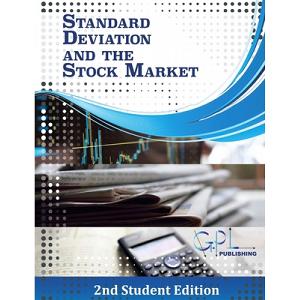How do dividend payments serve to reduce agency costs between corporate managers and external investors? under what circumstances might a firm borrow money to make its dividend payments?
Answer:
Dividend payments can play a significant role in reducing agency costs between corporate managers and external investors. Here’s how they achieve this, along with the circumstances under which a firm might borrow money to make its dividend payments.
How Dividend Payments Reduce Agency Costs
- Discipline on Management:
- Reduction of Free Cash Flow: By paying dividends, a company reduces the amount of free cash flow available to management. This reduction limits the funds that managers can potentially misuse for non-value-adding projects or excessive perks, aligning their interests more closely with those of shareholders who prefer returns on their investments.
- Incentive Alignment: Regular dividend payments signal to managers that they must efficiently manage resources and generate sufficient cash flows to meet these obligations, thereby promoting a more disciplined approach to capital allocation.
- Signal of Financial Health:
- Positive Signal to Investors: Consistent dividend payments can signal financial stability and confidence in future earnings. This helps mitigate information asymmetry between managers and investors, as investors often interpret dividends as a sign that management believes the company is performing well.
- Market Reactions: Investors may react positively to dividend announcements, leading to an increase in stock prices. This reaction can further incentivize management to maintain or increase dividends, fostering accountability.
- Mitigation of Agency Problems:
- Decreased Managerial Discretion: By committing to regular dividend payments, management has less discretion over cash flows, which can help mitigate agency problems where managers might prioritize personal interests over shareholder value.
- Monitoring Effect: The need to generate consistent cash flows for dividends can lead to better monitoring of managerial performance by shareholders, as dividends create a clear benchmark for evaluating management effectiveness.
Circumstances for Borrowing to Make Dividend Payments
Firms may choose to borrow money to fund dividend payments under certain circumstances:
- Cash Flow Shortages:
- If a company experiences temporary cash flow shortages but wants to maintain its dividend policy (to uphold investor confidence or avoid negative market reactions), it may opt to borrow funds.
- Strategic Financial Management:
- Companies may borrow strategically when they believe that the cost of debt is lower than the cost of equity or when they want to take advantage of favorable borrowing conditions (e.g., low-interest rates) while still providing returns to shareholders.
- Maintaining Dividend Consistency:
- Firms with a history of stable or increasing dividends may feel pressured to continue this trend even during periods of lower earnings. To avoid cutting dividends—which could negatively impact stock prices—they might resort to borrowing.
- Tax Considerations:
- Since interest on debt is tax-deductible, firms might find it financially advantageous to borrow rather than use retained earnings or issue new equity, especially if they are in a high tax bracket.
- Investment Opportunities:
- If a firm has profitable investment opportunities but also wants to pay dividends, it might choose to borrow funds temporarily. This allows them to invest in growth while still rewarding shareholders.
Dividend payments serve as an effective mechanism for reducing agency costs by enforcing discipline on management and signaling financial health to investors. However, firms may resort to borrowing for dividends primarily due to cash flow constraints, strategic financial management considerations, or maintaining investor confidence in their dividend policies.
You have been watching Easy Electronic shares carefully for the last three years. Two months ago the company announced a dividend reduction from RM0.30 per quarter to RM0.20 per quarter. On the very next ex - dividend date, the stock price fell by RM0.12. There is no capital gains tax.
Answer:
The reduction in Easy Electronic's dividend from RM0.30 to RM0.20 per quarter and the subsequent drop in stock price by RM0.12 on the ex-dividend date can be interpreted through several financial principles related to investor behavior and market reactions.
Interpretation of Price Change
- Dividend Reduction Signal:
- The decrease in dividends is often perceived as a negative signal regarding a company's future profitability or cash flow stability. Investors may interpret this reduction as an indication that the company is facing financial difficulties or expects lower earnings, which can lead to a lack of confidence in the company's future performance.
- Price Adjustment Mechanism:
- On the ex-dividend date, the stock price typically adjusts downward by approximately the amount of the dividend paid. In this case, with a dividend reduction of RM0.10 per share (from RM0.30 to RM0.20), one might expect a corresponding drop in stock price. However, the actual decline was RM0.12, which suggests that investors reacted negatively not only to the dividend cut but also to potential underlying issues affecting the company's financial health.
- Market Efficiency:
- The efficient market hypothesis suggests that all available information is reflected in stock prices. The larger-than-expected drop indicates that investors are adjusting their expectations based on new information regarding the company's future cash flows and profitability following the announcement of the dividend cut.
- Investor Tax Considerations:
- Since investors face a tax rate of 0% on dividends, they may prioritize capital gains over dividends when assessing investment returns. This could lead to a more pronounced reaction to dividend cuts, as investors may shift their focus to expected future growth and returns rather than current income.
- Psychological Factors:
- The psychological impact of a dividend cut cannot be underestimated. Investors often prefer stable or increasing dividends as a sign of a company's health and reliability. A reduction can create fear and uncertainty, prompting them to sell shares, which can further depress stock prices.
The RM0.12 drop in Easy Electronic's stock price following the dividend reduction reflects investor concerns about the company's future profitability and cash flow stability. The adjustment exceeds the nominal dividend reduction amount, indicating that market participants are factoring in additional risks associated with the company's financial outlook. This scenario illustrates how dividend policies significantly influence investor perceptions and market behavior, especially when changes signal potential issues within the firm.
Answer:
The interpretation of the price change for Easy Electronic shares following the dividend reduction from RM0.30 to RM0.20 per quarter, in the context of a 30% tax rate on dividends, can be analyzed through several financial principles and investor behavior.
Key Points of Interpretation
- Dividend Reduction Impact:
- The reduction in dividends is typically viewed negatively by investors, as it may signal potential issues with the company's profitability or cash flow. In this case, the cut from RM0.30 to RM0.20 represents a 33.33% decrease in the dividend payment, which can raise concerns about the company’s financial health.
- Price Adjustment Mechanism:
- On the ex-dividend date, stock prices generally adjust downward by an amount close to the dividend paid. However, since the dividend was reduced, investors may have anticipated a larger negative impact on future earnings. The actual decline of RM0.12 in stock price indicates that investors reacted not just to the immediate loss of dividend income but also to potential long-term implications for the company's performance.
- Tax Considerations:
- Given that investors face a 30% tax rate on dividends, they may place greater emphasis on capital gains over dividend income when evaluating their investments. This tax disadvantage on dividends could lead to a more pronounced negative reaction to a dividend cut, as investors might prefer to see retained earnings reinvested into growth opportunities rather than distributed as lower dividends.
- Market Efficiency and Investor Sentiment:
- The efficient market hypothesis suggests that all available information is quickly reflected in stock prices. The price drop exceeding the nominal dividend reduction indicates that investors are incorporating broader concerns about future profitability and risk into their valuations.
- The psychological aspect of dividend cuts cannot be overlooked; investors often perceive cuts as a sign of management's inability to generate sufficient profits, leading to increased selling pressure.
- Expected Future Cash Flows:
- Investors typically value stocks based on expected future cash flows, which include both dividends and capital gains. A reduction in dividends may lead investors to revise their expectations regarding future cash flows downward, contributing further to the stock price decline.
The RM0.12 drop in Easy Electronic's stock price following the dividend reduction reflects investor concerns about the company's financial stability and future profitability, exacerbated by the 30% tax rate on dividends. The negative market reaction indicates that investors are not only adjusting for the immediate loss of dividend income but are also factoring in potential long-term impacts on company performance and cash flow generation. This situation illustrates how dividend policies significantly influence investor perceptions and market behavior, especially when changes signal possible underlying issues within the firm.
If the market has an expected return of 12 percent and a standard deviation of 26 percent, and the risk - free rate is 5 percent, explain how you can construct a portfolio with an expected return of 20 percent. what will be the standard deviation of this portfolio?
To construct a portfolio with an expected return of 20% given the market conditions, we can utilize the Capital Asset Pricing Model (CAPM) and the concept of combining risky assets with a risk-free asset. Here's how to approach this:
Given Information
- Expected Market Return (): 12%
- Risk-Free Rate (): 5%
- Standard Deviation of Market Returns (): 26%
- Target Expected Return for Portfolio (): 20%
Steps to Construct the Portfolio
- Determine the Required Risk Premium:
The risk premium is the additional return expected over the risk-free rate. It can be calculated as: - Calculate the Market Risk Premium:
The market risk premium is the difference between the expected market return and the risk-free rate: - Determine the Weight of the Market Portfolio ():
To achieve an expected return of 20%, we need to find the weight of the market portfolio in our overall portfolio. We can use the following relationship based on the expected returns:Rearranging this gives:Substituting in our values: - Interpretation of Weight Greater than 1:
A weight greater than 1 indicates that we need to leverage our investment in the market portfolio, meaning we would borrow money (at the risk-free rate) to invest more than our initial capital in the market portfolio. - Weight of Risk-Free Asset ():
Since , we can find :This negative weight confirms that we are borrowing to invest more in the market portfolio.
Calculating Standard Deviation of the Portfolio
The standard deviation of a portfolio that consists of a risky asset (the market portfolio) and a risk-free asset can be calculated using:Substituting in our values:
To construct a portfolio with an expected return of 20%, you would need to invest approximately 214% of your capital in the market portfolio, effectively borrowing funds at the risk-free rate to achieve this leverage. The standard deviation of this leveraged portfolio would be approximately 55.64%, indicating a significantly higher level of risk associated with this strategy.
source: Corporate Finance First Semester Examination Academic Session 2011/2012, Master of Business Administration, Universiti Sains malaysia


No comments:
Post a Comment